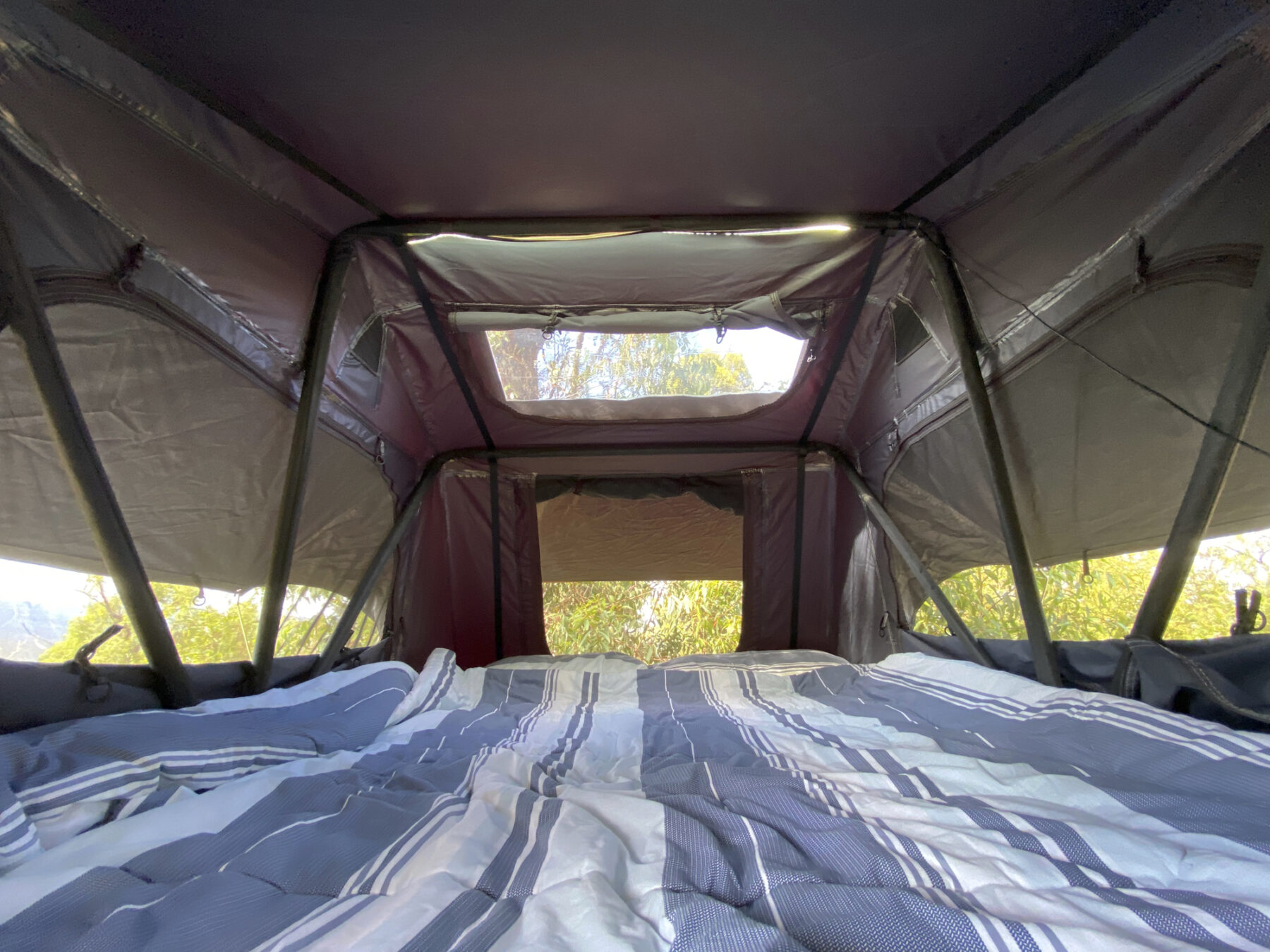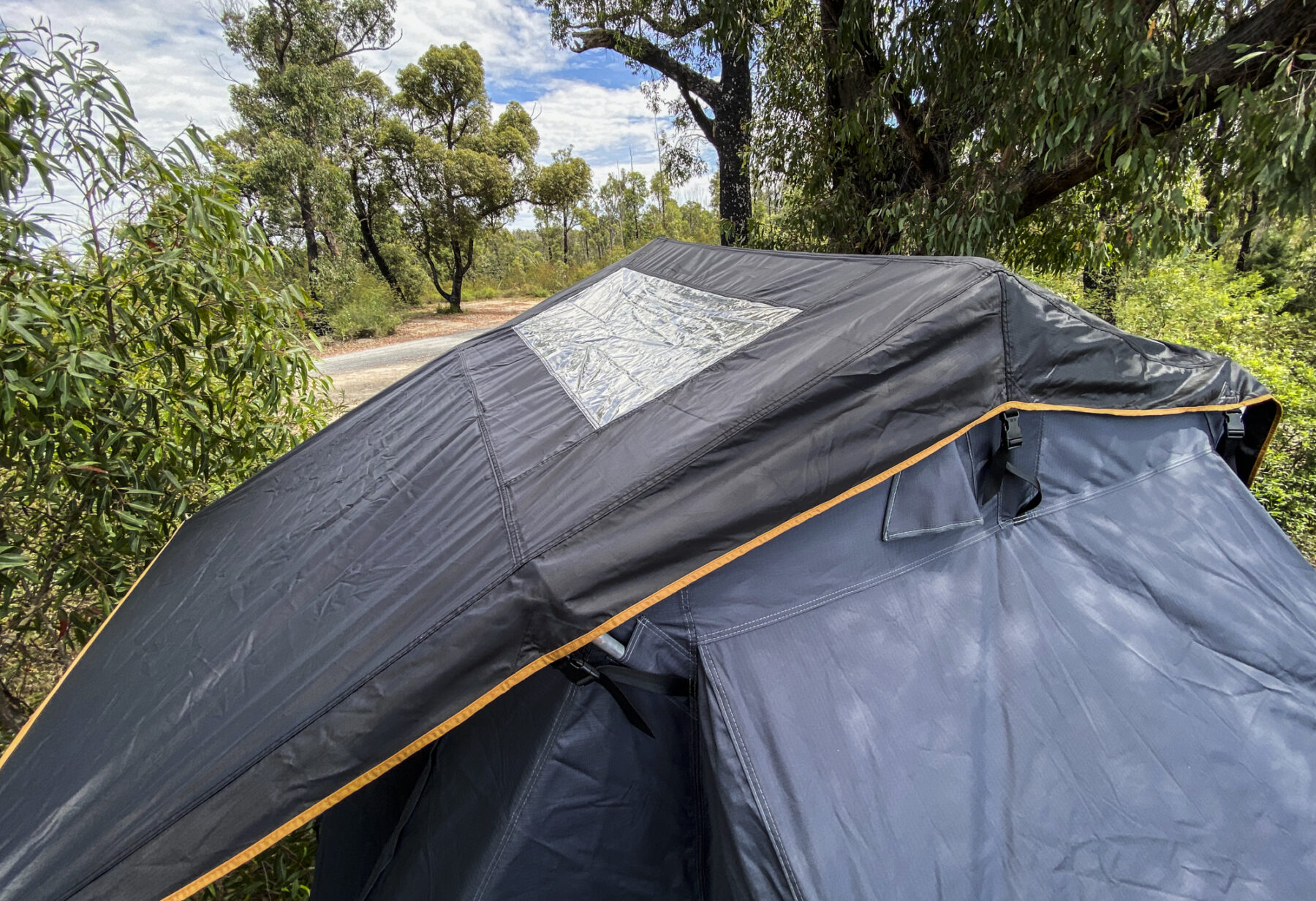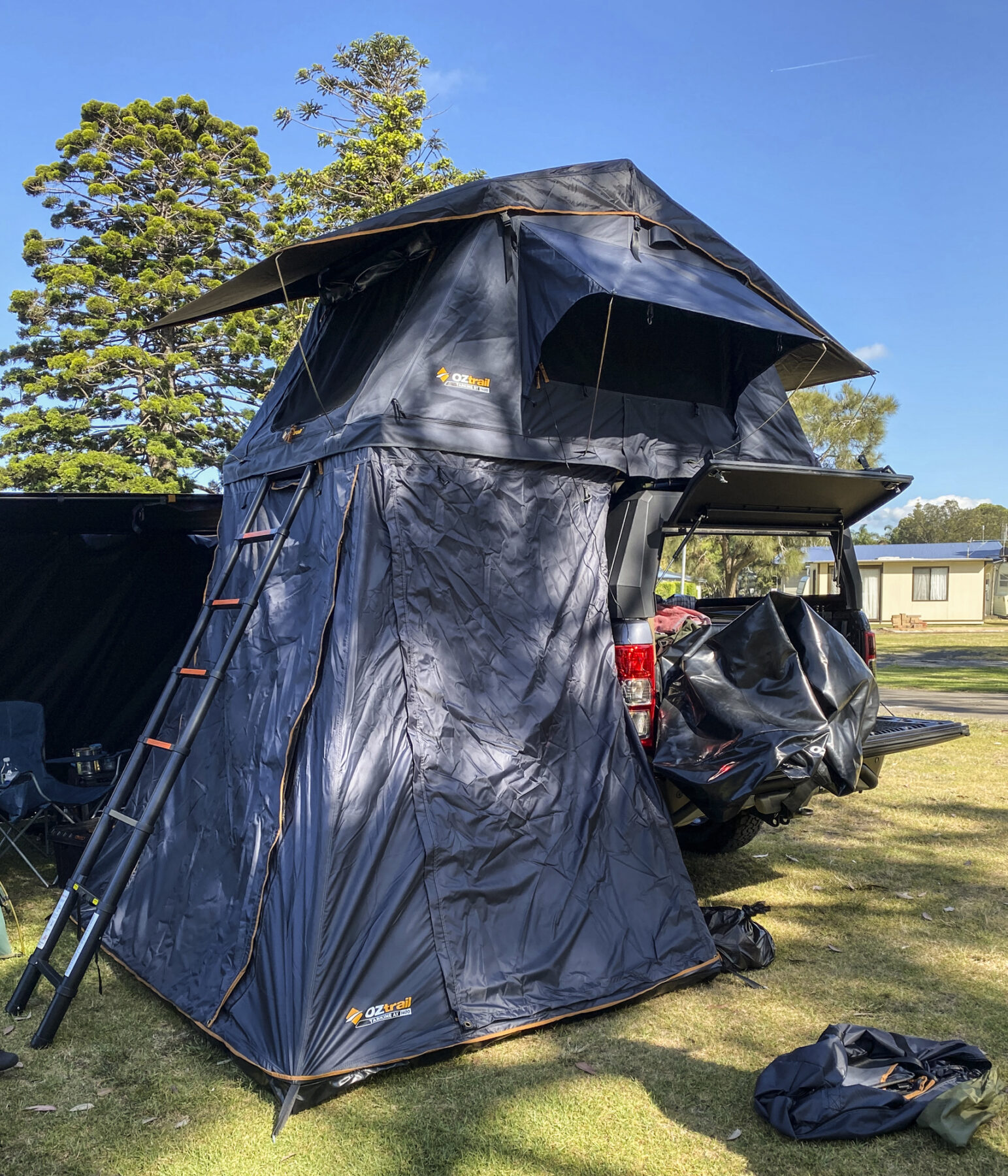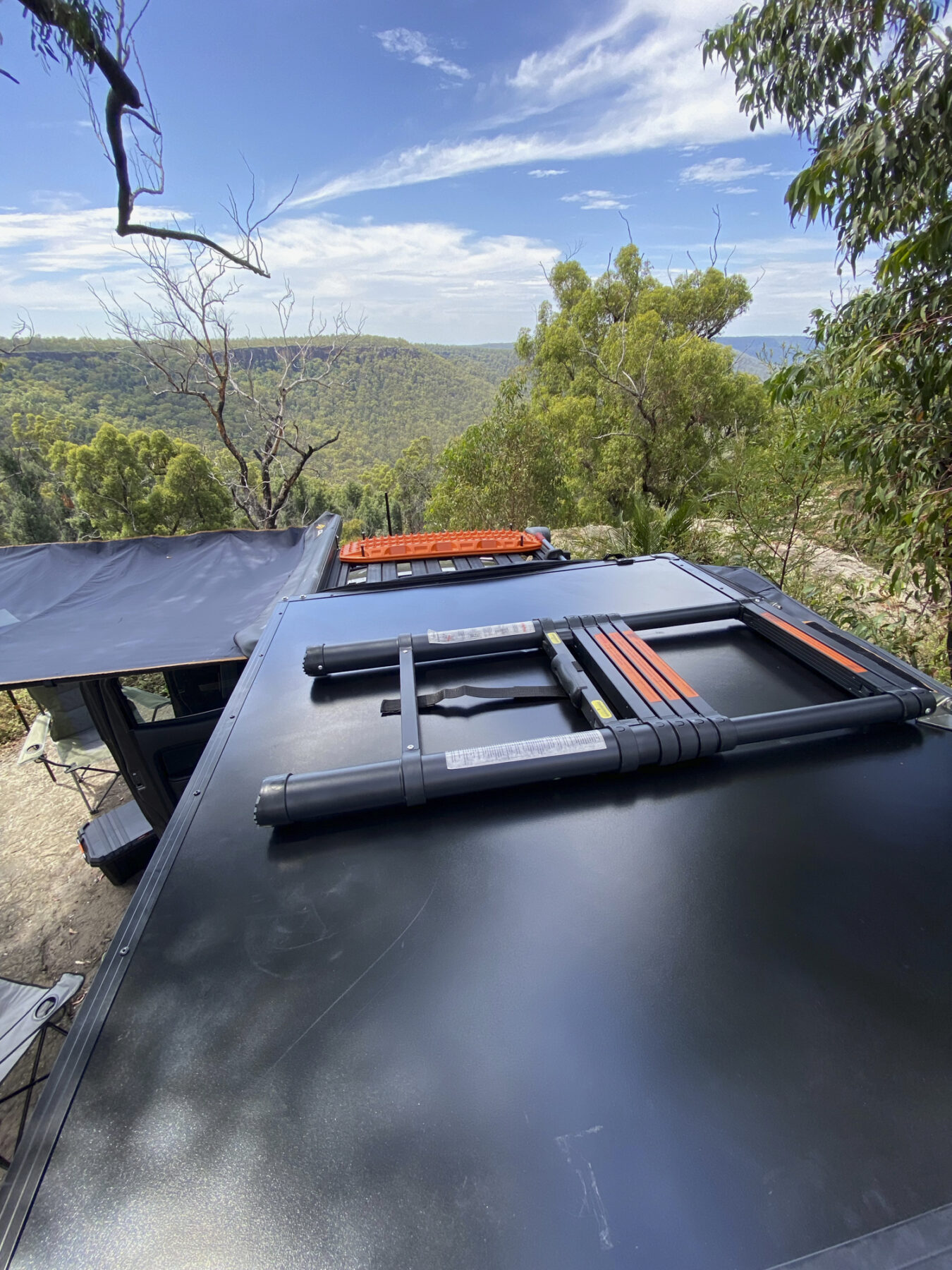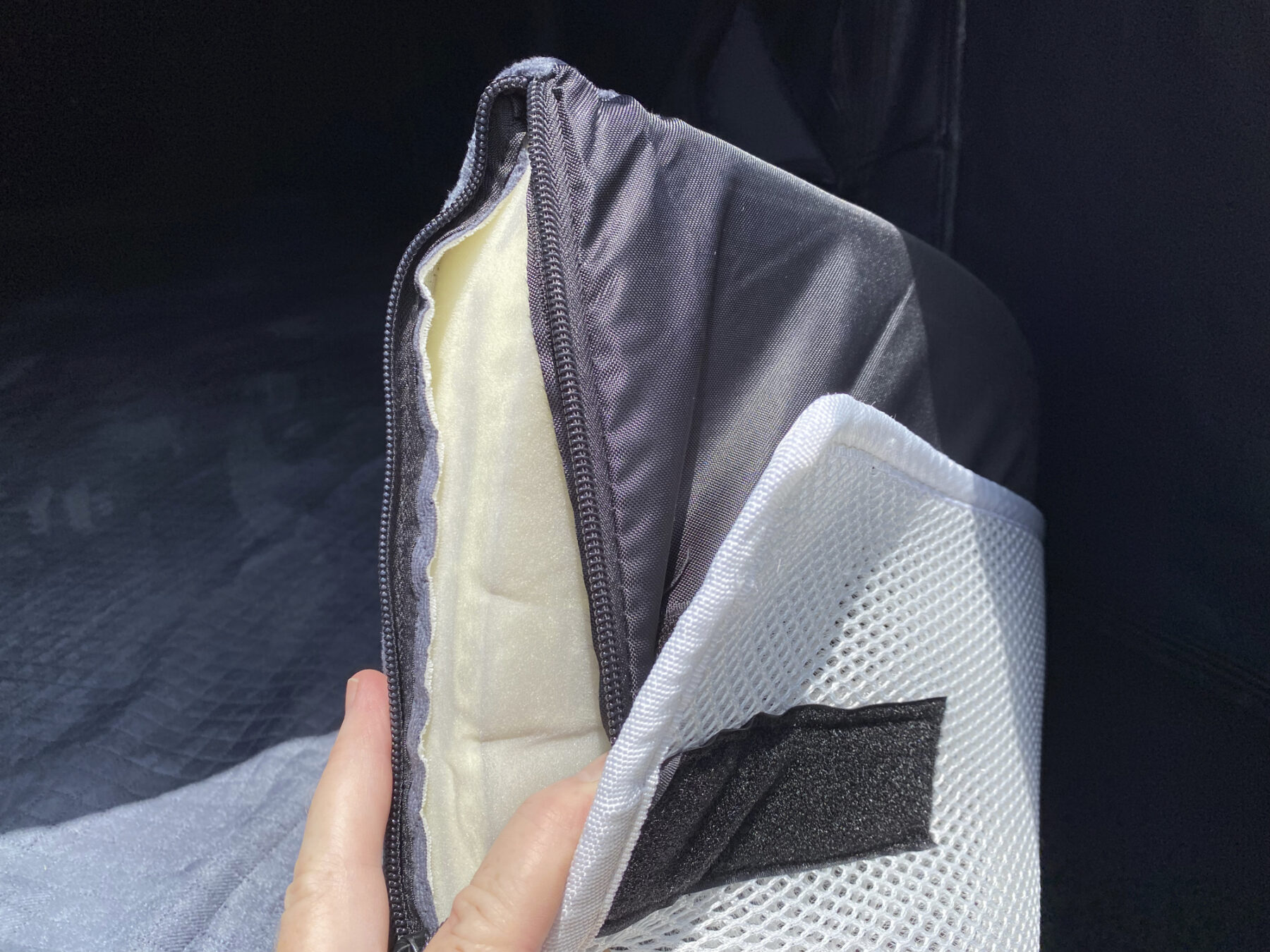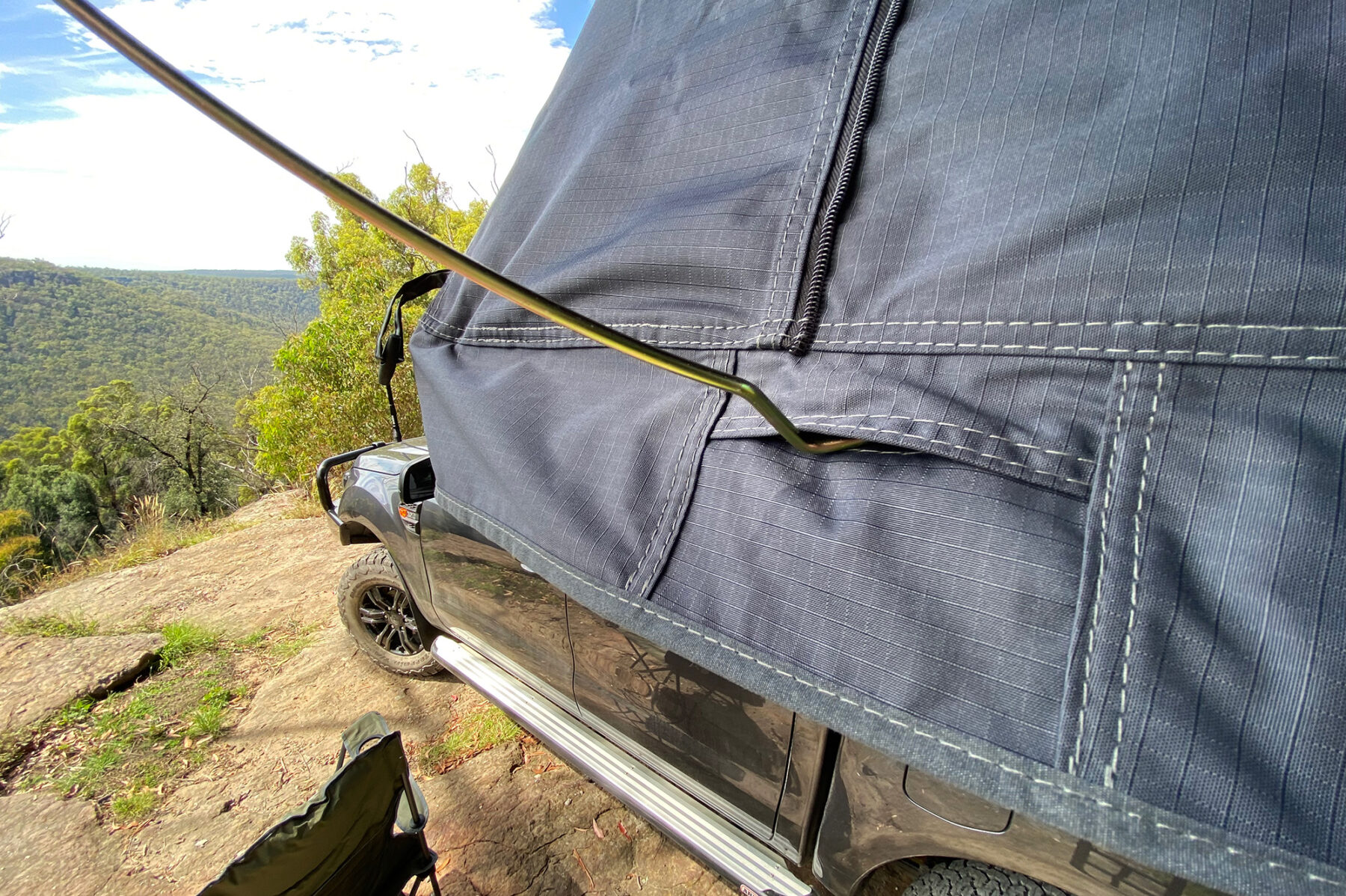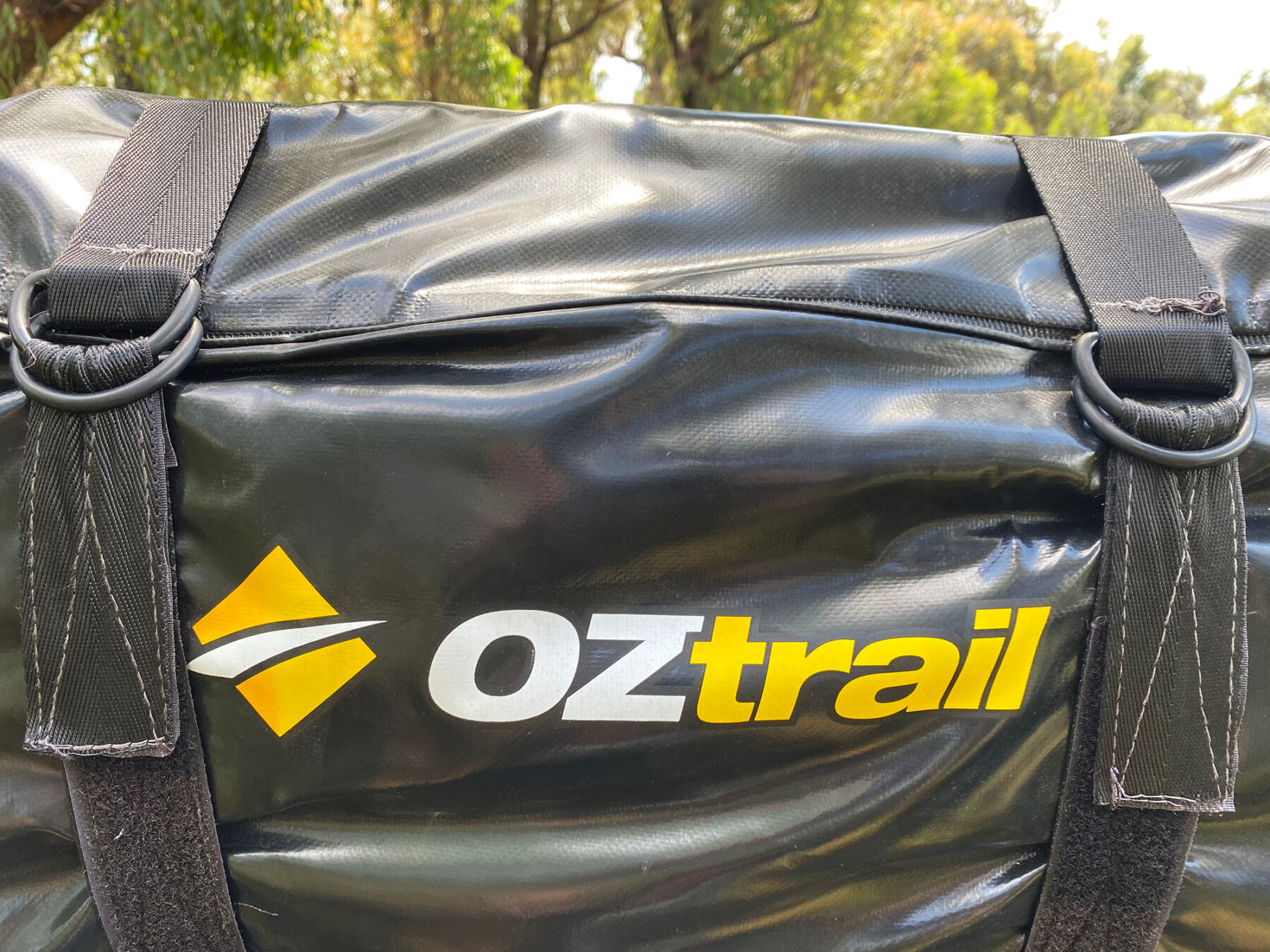OZtrail Tarkine 1400 rooftop tent: Tested

It’s widely accepted that rooftop tents were developed in Africa, where being able to sleep off the ground is an important consideration because the wildlife can eat you while you sleep. And while we don’t have those kinds of carnivores in Australia, rooftop tents offer a few advantages over traditional tents that make them ideally suited use here. We were intrigued enough to fit the OZtrail Tarkine 1400 to our vehicle to see if these lofty digs lived up to the hype.
There are many facets to a rooftop tent’s appeal. For one, being off the ground is good when the weather is bad, as it means you don’t have to pitch your tent in muddy puddles. Secondly, the design of most rooftop tents allows for fast set-up and almost as fast pack-up, making camping a breeze for nomadic travellers who find it hard to spend more than one night in the same spot.
The OZtrail Tarkine 1400 ticks both of these boxes, in that it allows us to sleep high and dry when we camp, and it only takes a couple of minutes to set up.
Design
The smallest and lightest rooftop tent in the OZtrail range, when open the Tarkine 1400 measures 2.4m x 1.43m x 1.3m, and it weighs 59kg. OZtrail recommends it be fitted by a professional 4WD aftermarket store or a roof rack expert, but I opted to fit it myself to a pair of Yakima LockNLoad crossbars I have on my Ranger’s aluminium canopy. Fitment was straightforward using the supplied hardware and once secured, I attached the ladder and fitted the PVC transit cover. The whole process only took an hour or so, which means it is relatively easy to remove the tent when not in use and refit it when needed.
As well as the flyscreened doors and windows, and small vents on either side up near the roof, there is a flyscreened ‘SkyMesh’ roof panel that can be opened to let heat out. There’s even a corresponding clear panel in the fly so you can look at the stars as you drift off to sleep.
Inside the tent there’s a removable LED strip light that can be plugged into any USB outlet, while the dark flyscreens provide good privacy, and make it difficult for outsiders to see inside the tent even when the strip light is illuminated.
The tent material is 280gsm ripstop polycotton canvas that ensures good insulation and breathability. The sealed seams are double-stitched, and the zippers and flyscreens are good quality. The fly is waterproof 210D PolyOxford flysheet and it has straps and buckles for adjustment.
The Tarkine’s 60mm-thick high-density foam mattress measures 2.4m long and 1.4m wide and is very comfortable. There’s an anti-condensation layer between it and the hard tent base to prevent moisture build-up and mould, and the mattress is fitted with a removable and washable cover.
For those who need additional shelter, there’s an optional annexe for the Tarkine that attaches via a sail track and a couple of zips and is then pegged into the ground. Measuring 2.3m x 1.7m, and with three large fly-screened doors and a tough (and removable) 600gsm PVC floor, the annexe can be used as an additional tent, somewhere to enjoy meals or simply as a storage area. The annexe also has a door on the inside that allows for vehicle access, and on my Ranger that means I can easily get to the fridge when standing in the annexe. The large external doors of the annexe can either be rolled up or, with tent poles, be used as awnings.
In the field
The Tarkine’s first test was a family camping weekend in a caravan park, and thankfully set-up was quick and easy despite my lack of experience; unzip and remove the PVC transit cover, release a couple of tie-down straps that secure the tent, extend the telescopic ladder and pull on it to unfold the tent, and voila. The attached fly opens with the tent and is held aloft at the doors by easy-to-attach spring-steel poles, and this same arrangement is used to hold the side-window awnings in place. The generous fly and awnings provide enough cover that you can leave the window and door flaps open in rainy weather to maintain good ventilation. Climbing into and out of the Tarkine is a doddle thanks to the stable telescopic ladder which features wide rungs and is positioned at a relaxed angle.
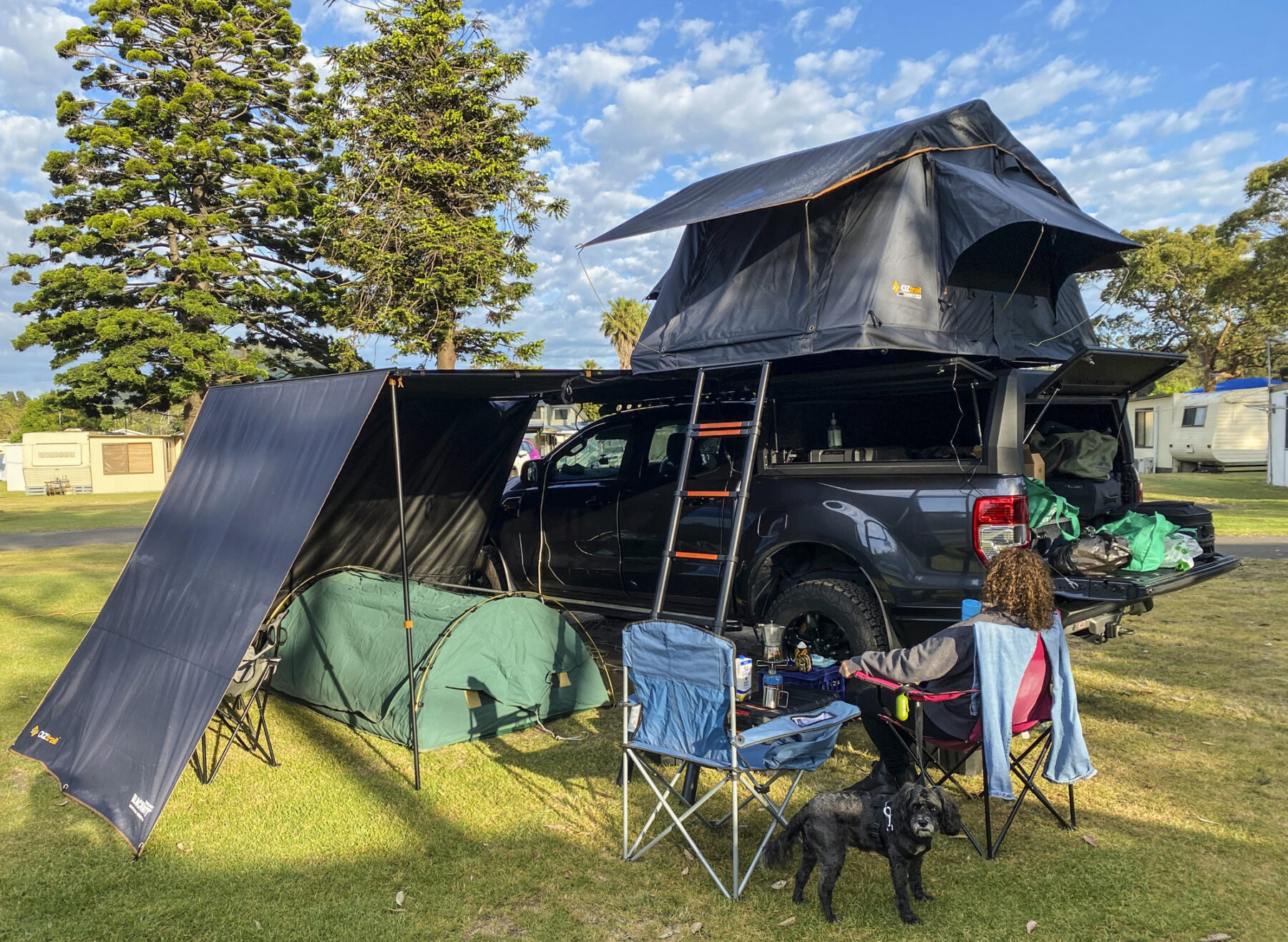
I must admit that I didn’t get to sleep in the Tarkine on its first outing; instead, my wife and I slept in our swag while our 12-year-old daughter and her bestie got to sample the comfort of that 60mm-thick foam mattress. The smiles on their well-rested faces assured us they had a good night’s sleep and they declared the Tarkine “the best tent ever”.
Packing up the tent is simply the reverse process of set-up, but it takes a little longer as once the tent is folded you have to ensure all the loose material is tucked away neatly before tightening the tie-down straps and refitting the transit cover. Nevertheless, it’s still a quick operation and with a bit of practice under my belt, I can now set it up and pack it away in just a few minutes.
The final word on the OZtrail Tarkine 1400
I have used the Tarkine 1400 a few times since that first trip and have found it to be as comfortable as the kids claimed it was. Some of the features I am particularly impressed by are the quality of construction, the ample ventilation, the comfortable mattress and the relatively low profile of the tent when packed for transit, which minimises wind drag when driving. For the asking price, I think it is great value for money. The optional annexe adds $400 and is a worthwhile add-on.
RRP: $1500 See OZtrail for more on this and other rooftop tents and outdoor gear.
